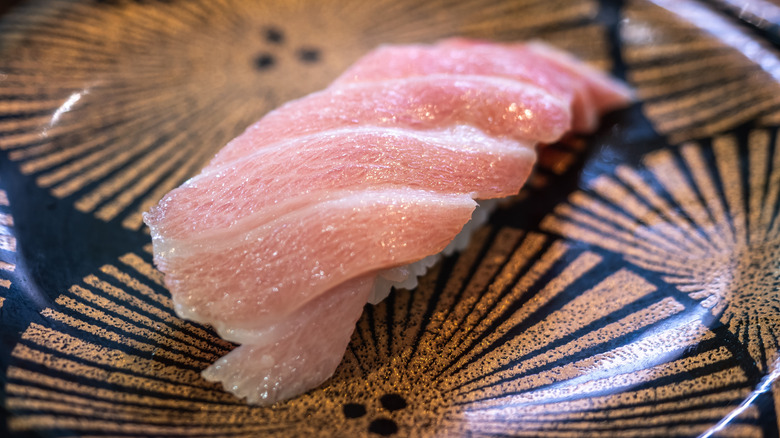Why Is Otoro Tuna So Expensive?
The world of sushi and sashimi is vast and complicated. From understanding what actually makes sushi and sashimi different to understanding the differences between different sushi meats, such as yellowfin vs bluefin tuna, the fine details and wealth of knowledge that goes into making sushi is quite fascinating. This same knowledge is often what determines the price behind certain types of sushi.
Out of all the types of fish out there, otoro tuna is one of the most expensive in the sushi world. Although tuna in general can be costly due to its scarcity, this particular cut of tuna costs even more because of its rich flavor and tender texture. In the sushi world, it has a quality equivalent to a well marbled premium steak.
On top of being noticeably rich and flavorful, bluefin tuna are becoming more and more scarce due to overfishing. Combined with the fact that older, more mature bluefin tuna typically have better quality meat, it is getting harder and harder to get otoro tuna. Thus, the price is scaled to match.
What exactly is otoro tuna?
Otoro tuna is the fattiest cut of bluefin tuna. It comes from the tuna belly, typically closer towards the head of the fish. Otoro is not to be confused with another cut of tuna belly, known as chutoro, which comes from closer to the rear end of the fish.
As a whole, tuna has been revered in Japanese cuisine since the Edo period. Ironically, toro tuna used to be discarded instead of valued. The precise reason or time when fattier cuts of tuna started to be valued is not exact, but at some point people came to the realization that the fattier cuts had a richer, umami flavor that was not present in leaner cuts.
This discovery, combined with the increasing popularity of sushi in the modern world, has led to otoro tuna being more and more expensive. The downside of this, beyond the high price tag, is that it has led to overfishing and consumption of bluefin tuna; as a result, multiple cuts of bluefin tuna including otoro are becoming pricier and harder to find. As such, many have turned to salmon belly or yellowtail as an alternative.

